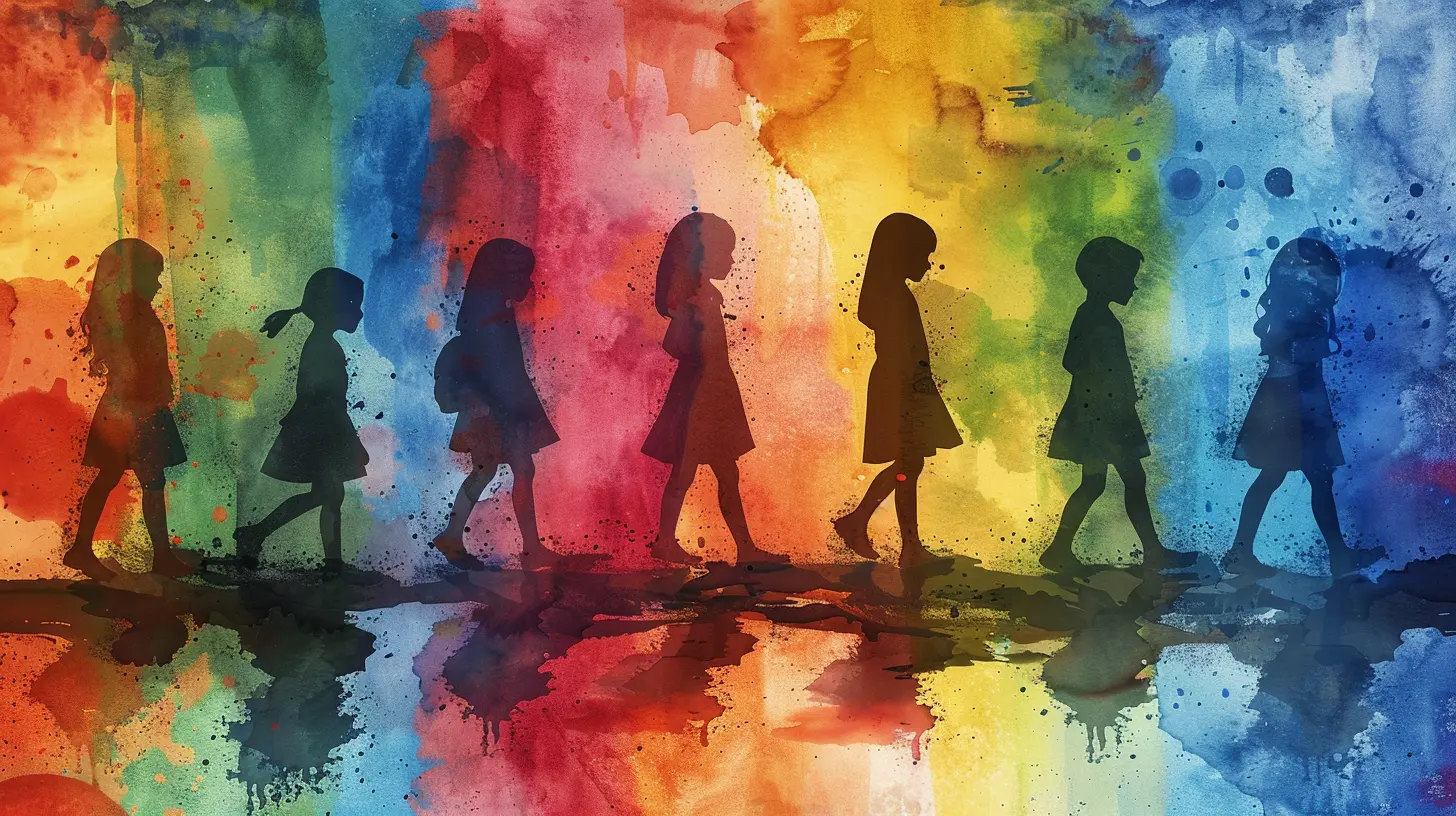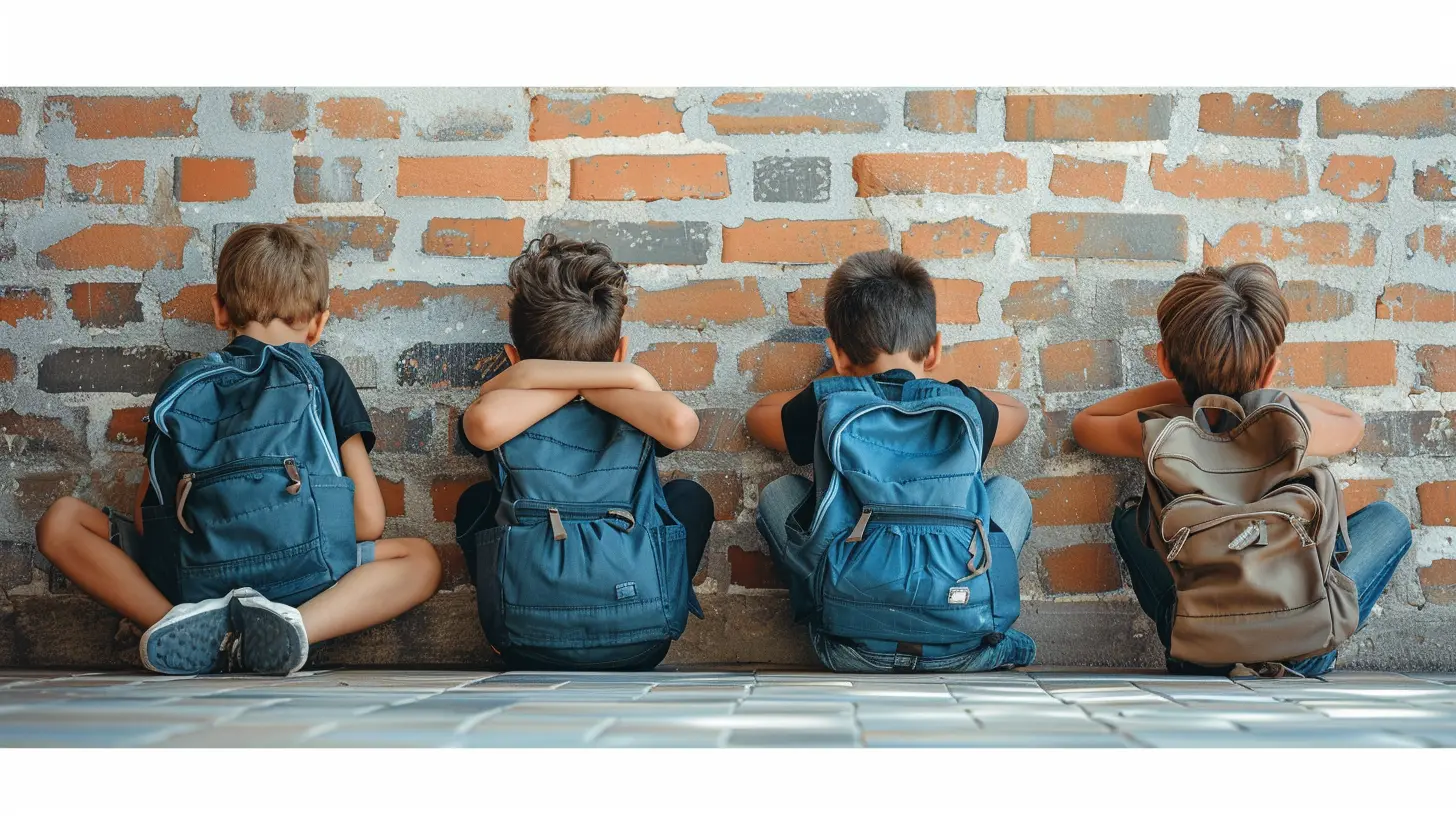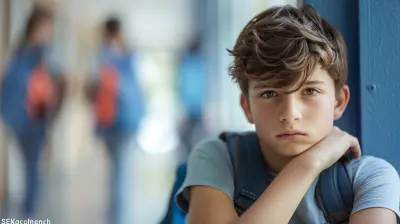The Link Between Bullying and Mental Health: What Schools Can Do
20 July 2025
Let’s face it—bullying isn’t just about stolen lunches or name-calling in the hallways. It cuts much deeper than that. For kids and teens, school can be a battlefield, and for some, the wounds go far beyond bruises or teasing. The emotional scars? They’re real. And they have a name: mental health issues.
Today, we’re diving into the messy, painful, and all-too-common link between bullying and mental health—and more importantly, what schools can actually do about it.
Why Bullying Isn’t Just “Kids Being Kids”
We’ve all heard someone brush off bullying with, “It toughens them up,” or “It’s just part of growing up.” But let’s be honest—those responses are outdated and downright harmful.Bullying is a form of abuse. Whether it’s verbal, physical, relational, or happening online (hello, cyberbullying), the damage it causes isn’t just temporary. It messes with a child’s confidence, their sense of safety, and their overall mental well-being.
The Emotional Toll on Victims
Kids who are bullied aren’t just dealing with bad days—they’re facing anxiety, depression, and sometimes even thoughts of self-harm. It chips away at their self-esteem until they start believing the lies they hear about themselves. Can you imagine walking into a place every day where you don’t feel safe or valued?That’s the daily reality of many students.
The Hidden Struggle of Bullies
Here’s something surprising: bullies aren’t always the heartless villains movies make them out to be. In many cases, kids who bully others are struggling with their own emotional pain. Aggression is often a mask for insecurity, trauma, or a lack of emotional regulation.So in a strange twist, both sides of the bullying equation can point to underlying mental health struggles.
The Mental Health Fallout: What the Research Says
There’s no shortage of studies linking bullying with serious mental health consequences. Let’s break down what experts are saying:- Victims of bullying are more likely to suffer from depression, anxiety disorders, and low self-esteem. They may even carry these struggles into adulthood.
- Chronic bullying can lead to something called “complex trauma,” where repeated emotional damage affects how the brain processes fear and stress.
- Bullies themselves—especially those who bully over long periods—are at higher risk for conduct disorders, antisocial behavior, and even substance abuse down the line.
- Bystanders, too, are impacted. Watching someone be bullied without knowing how or when to act can cause feelings of helplessness, guilt, or anxiety.
The takeaway? Bullying affects everyone in the ecosystem, not just the kid getting pushed around.
Why Schools Play a Critical Role
If bullying is the storm, then schools are the umbrella—or at least, they should be.Think about it: kids spend more time in school than almost anywhere else. That makes schools the front line in the fight against bullying and its mental health impacts. But here’s the thing: it’s not about putting up a poster in the hallway and calling it a day. Real change takes more than a catchy slogan.
So, what can schools actually do to make a difference?
1. Build a Culture of Belonging
At the core of any anti-bullying effort should be a simple idea: every student deserves to feel like they matter. When schools create a culture where kindness, empathy, and inclusion are the norms—bullying has less room to grow.Practical Steps:
- Encourage peer mentorship programs where older students guide younger ones.- Highlight stories of empathy and connection during assemblies or morning announcements.
- Include social-emotional learning (SEL) in the curriculum to help students develop key life skills like empathy, emotional regulation, and conflict resolution.
It’s like giving kids emotional armor to protect themselves and others.
2. Normalize Talking About Mental Health
Mental illness still carries a ton of stigma—especially among young people. When schools stay silent on topics like depression, anxiety, or stress, they send a message that these things should be hidden.Here’s what schools can do:
- Have open discussions around mental health in classrooms.- Bring in mental health professionals for talks or Q&A sessions.
- Train teachers and staff to recognize the warning signs of emotional distress and know how to respond.
Let’s turn campuses into safe spaces, not just for learning algebra, but also for processing big feelings.
3. Implement Strong Anti-Bullying Policies
Policies can be powerful—but only if they’re more than just words on paper. Effective anti-bullying policies are clear, enforceable, and well-known by students, staff, and parents.Things to Include:
- A clear definition of what counts as bullying—including cyberbullying and exclusion.- A step-by-step process for reporting and investigating incidents.
- A support system for both victims and perpetrators to get help, not just punishment.
When students know what’s expected and what will happen if someone crosses the line, it creates accountability.
4. Invest in On-Campus Counseling
Let’s be real—kids can’t focus on math or science while battling inner chaos. School counselors aren’t just there for helping choose classes—they should also be first responders for mental health issues.What Helps:
- Having licensed therapists available for regular, confidential appointments.- Creating "wellness rooms" where students can decompress in a calming environment.
- Offering group therapy or support circles for students impacted by bullying.
Having someone to talk to, especially someone trained to help, can be life-changing.
5. Empower Students to Speak Up
One of the trickiest parts of bullying is the silence. Victims fear retaliation. Witnesses freeze. No one wants to be the "snitch." But what if we flipped the script?How to Do That:
- Set up anonymous reporting systems (online forms, drop boxes).- Celebrate students who act courageously to stop bullying.
- Teach kids what safe and constructive intervention looks like—like distracting the bully, getting help from an adult, or comforting the victim later.
Giving students a voice makes the bullies’ power shrink fast.
6. Partner With Parents & the Community
It takes a village, right? Schools can’t fight this fight alone. Parents, guardians, and community leaders should be part of the conversation.Game-Changers:
- Host workshops for parents on how to talk to kids about bullying and mental health.- Share resources like therapist directories, crisis lines, or online support forums.
- Collaborate with local mental health organizations for outreach programs.
When everyone’s on the same page, the support network gets a lot stronger.
7. Use Real-World Stories to Connect
You know what sticks with people more than stats? Stories.Real experiences—shared with permission—can help students understand the deep emotional toll of bullying and the strength it takes to heal. Whether through guest speakers, student panels, or short films, highlighting lived experiences builds empathy and drives home the message: this matters.
The Long-Term Impact
Stopping bullying isn’t just about fewer fights in the hallway—it’s about protecting mental health for the long haul. When schools take bullying seriously, they're:- Reducing psychological trauma early
- Encouraging students to build healthy relationships
- Creating safer, more inclusive learning spaces for everyone
And honestly? That’s the kind of environment where young minds can truly thrive.
A Note to Educators and School Leaders
If you’re a teacher, principal, or school counselor, know this: the work you do matters more than you think. A kind word, a listening ear, or a safe classroom can change the course of a student’s life.Even small actions can have ripple effects. It’s not about being perfect—it’s about showing up, speaking up, and standing up.
Wrapping It Up
Bullying and mental health are deeply intertwined. You can't address one without acknowledging the other. Thankfully, schools are uniquely positioned to be part of the solution.By creating safe environments, normalizing conversations around mental health, supporting both victims and bullies, and involving the wider community, schools can help stop bullying in its tracks—and give every student a shot at growing into a confident, emotionally healthy adult.
Because every child deserves to feel safe. Every teen deserves to feel heard. And every school has the power to make that happen.
all images in this post were generated using AI tools
Category:
Bullying PreventionAuthor:

Anita Harmon
Discussion
rate this article
1 comments
Alexa Blevins
Empowering schools to combat bullying is crucial for nurturing mental health. Together, we can create safe environments where every student thrives, fostering resilience and kindness for a brighter future. Let's make a difference!
August 17, 2025 at 4:22 AM

Anita Harmon
Thank you for your insightful comment! Empowering schools to address bullying is indeed vital for supporting mental health and creating safe, inclusive environments. Together, we can foster resilience and kindness in our students.


